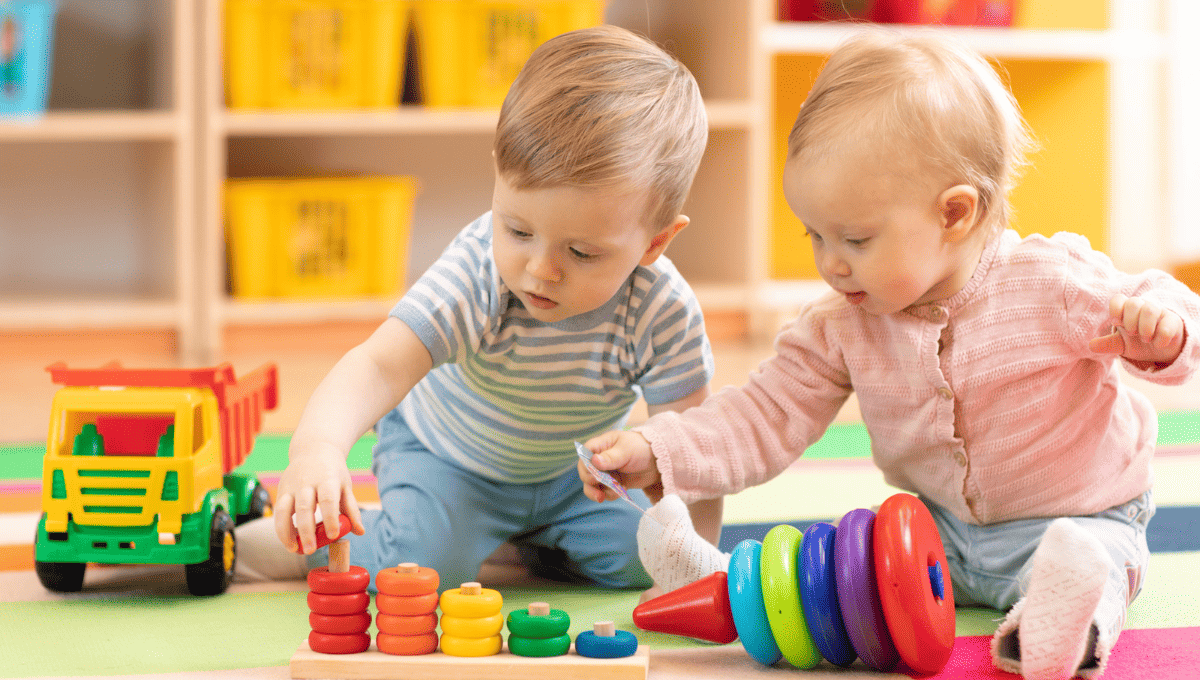Have you ever witnessed a toddler giggling while stacking blocks higher before the tower tumbles down? Children aren’t just having fun when playing. Through toys and games, they discover lessons in balance, persistence and spatial logic.
Toys are and should be an essential part of every child’s life. While fun to look at and play with, they also hold a crucial purpose in child development. Unlike passive screens, toys engage children’s bodies and imaginations. With wisely chosen toys, young engineers construct, artists express, and others nurture empathy by acting out roles.
Discover the power toys hold in developing young minds in this article. There’s a lot more behind the cute designs and vivid colours.
The Benefits Of Play
Playing is a voluntary and enjoyable activity that fully captures a child’s physical, mental, or emotional engagement. From sensory discovery and physical movement to symbolic thinking and socialising, the nature of play can differ greatly.
No matter the form it takes, it consistently holds a child’s focus for long stretches, often sparking joy. When you see a child playing with toys, let them be. They’re picking up various lessons from a session without even realising it.
Anything from toy cars to stuffed dolls and soft figurines like Goo Jit Zu toys has a positive impact on a child’s growth. Numerous studies indicate that play significantly enhances development in the following areas:
Cognitive
Open-ended play with versatile toys boosts divergent thinking, cognitive flexibility, and problem-solving abilities. Symbolic play also stretches imagination and language skills. Studying the play of young animals, scientists found that increased playfulness correlates with extra brain growth.
Allowing children prolonged creative play sessions with engaging toys builds their coping strategies and ability to generate novel solutions. Unstructured play also expands linguistic, social, and emotional intelligence, which aids academic learning.
Physical
Physical play improves strength, balance, and coordination, which are critical to motor development. Active play also contributes to maintaining a healthy weight in children, which could prevent long-term problems like heart disease.
When kids stay active, they get their hearts pumping, muscles working, and their bodies practising complex movements. These physical activities help children better understand their body’s capabilities.
Social-Emotional
Dramatic roleplaying, especially with adult guidance, promotes empathy, cooperation, and conflict resolution. Even parallel play among toddlers aids understanding of social cues and norms. Pretending together, children experiment with social roles, tell shared stories, and navigate emotional scenarios.
These joint imaginative activities build self-confidence as children safely explore different perspectives. Shared pretend play also forges friendships and emotional bonds vital for well-being. Compare that to long periods of non-interactive screen time, which often fails to provide the same level of growth.
How Toys Shape Play

Different toys suit various forms of play, each aligned with developmental needs. Here’s how the most common toys and games shape play and a child’s growth:
Building Blocks
Little engineers practice structural problem-solving and geometry, stacking blocks in creative towers and buildings. Spatial thinking, math concepts, and physics principles come alive as young architects test materials and designs. Block play also strengthens hand-eye coordination and planning abilities vital to playing and learning.
Arts and Crafts
Crafting boosts creativity and self-expression as children experiment with materials. Finger painting promotes fine motor control, while safety scissors or beads develop dexterity and concentration. Following step-by-step craft instructions builds focus, planning, and a sense of achievement.
Puzzles and Games
Working together to solve puzzles teaches perseverance, critical thinking and cooperation. Observing game rules introduces essential social skills like turn-taking and handling competition. Mastering these early play challenges forges cognitive flexibility, guts and sportsmanship.
Pretend Play
Imagining themselves as different characters or professions, children learn empathy, new perspectives and diverse ways of interacting. Pretend friends, puppets, and household props come alive with homemade stories, nurturing emotional skills vital to relationships and self-confidence.
Choosing The Right Toys For Your Child
A child needs to play with toys that are appropriate for their age. For instance, babies thrive with sensory toys like soft blocks, rattles, and board books. These toys fascinate their senses, strengthen hand-eye coordination, and foster a love of reading.
Meanwhile, toddlers fare best with shape sorters, alphabet puzzles, and plastic animals. With these toys, they learn concepts like numbers, letters and colours. Other toys they may enjoy include clay or linking blocks to occupy their busy hands while teaching cause and effect. Simple card games, building sets, and music toys also create opportunities for practising turn-taking, creativity, and dexterity.
As children grow, introduce toys like tricycles, balls, and pull toys that build gross motor control and balance. Parents and caregivers should select toys suitable for their child’s current abilities, trading up as they master existing ones. This maintains an engaging level of fun challenge over time. Consider visiting your local toy library for age-appropriate and educational options you can borrow to reduce the clutter at home.
Conclusion
From peekaboo with mum to rambunctious games with friends, playing is a part of childhood. Thoughtful toy selection and engaged guidance from caregivers unlock cognitive, physical, and emotional learning in children, providing the building blocks for later developmental gains.
As Mr. Rogers wisely said, “Play gives children a chance to practice what they are learning”. Embrace the gift of play. Complement digital entertainment with interactive games, crafts, or make-believe with your kids. Brain development will blossom, relationships will grow, and your child’s future will shine brighter.

